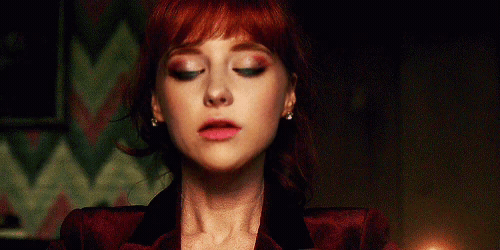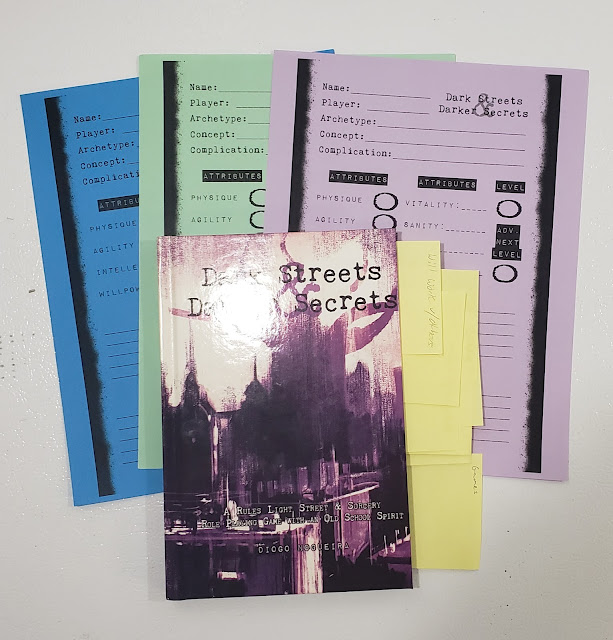The weekend before last I drove down to my parent's house to see my dad before his 92nd birthday (his doctor told him he'll likely live to a 100) and my sister for her 51st birthday. Picked up a few books my sister had for me, mostly older occult books. But driving through the state and back got me thinking about some more local horrors. I mean there HAS to be something interesting hiding in all those corn and soybean fields. I also thought about how these creatures would work well in all the occult games I was talking about last week.
Another thing is I love Bigfoot legends. I don't believe any of them for a moment, but they are so great for games. Bringing these all together really helps capture the feel of the games I wanted to play in the early 80s. So for that D&D-loving kid in Central Illinois back in the 1980s who loved Bigfoot stories, this is for you. And by "you" I mean "me."
Illinois Hominids
When one hears about Illinois the first thing that comes to mind are cornfields, Chicago, and spectacularly corrupt politicians. One doesn't typically think of 10 ft. tall hominids. But for the residents of Illinois, these creatures are not unheard of. They have been spotted all over the state from the northernmost points to the far south point, nearly 400 miles.
In nearly all cases these creatures try to avoid humanity. Their great size and obvious strength would make them a threat to any group of investigators, but thankfully they have so far shown no particular desire to attack.
Illinois Hominids like all species of sasquatches are large, nocturnal creatures that walk upright like humans. It appears to be omnivorous but its preference is for vegetables and fruits found in the wild.
For this posting, I am going with "Illinois Hominids" as opposed to "Bigfoots" or "Sasquatches" since both of those terms are more associated with creatures of the Pacific Northwest. "Skunk Apes" are more commonly referring to creatures in the Southern United States.
I am also grouping creatures together that may, or may not, be classified as Sasquatches in other Bigfoot lore. Most of these creatures have only been reported once.
Dogmen of McHenry County
These creatures are 7" tall creatures that appear to be some sort of simian/canine/hominid hybrid. Their defining feature is their dog-like faces. Similar creatures have been sighted in adjoining Cook County, and as far south as Christian (nearly 250 miles to the south) and Woodford Counties. They are noted for their howls in the night. Many scholars classify these as separate sorts of creatures.
Cole Hollow Road Monster
Found in central Illinois this creature has been sighted near Peoria, IL, and might be related to the similar Farmer City Monster found further to the east. This creature is grayish in color and stands 7"-8" tall. It is quite reclusive and can hide in natural environments with 95% effectiveness and can never be surprised.
Swamp Hominids of Southern Illinois
Several creatures occupy the lands at the far end of the state. Unlike the other hominids featured here these usually range to about 10' tall and tend to live near swamps or other wetlands. They also have a smell that can be detected for a 100 yards, any closer and investigators suffer a -3 (or roll with disadvantage) on any attacks. They share this feature with the Skunk Ape of the southern part of the country.
These creatures include the Tuttle Bottoms Monster of Harrisburg, IL which also has an elongated snout. Nearby Enfield in White County also has The Enfield Horror, a fast-moving hominid.
The Abominable Swamp Slob, also known as the A.S.S., are found in Jackson County near the Shawnee National forest. It can emmit an ear-shattering shriek. The most famous of these is the Murphysboro Mud Monster and "Sassy" the Shannee Sasquatch.
RPG Stat Blocks
Illinois Hominds
Basic BestiaryFrequency: Very Rare
Number Appearing: 1d4 (1d6)
Alignment: Neutral [True Neutral]
Movement: 180' (60') [18"]
Armor Class: 6 [13]
Hit Dice: 6d8+18* (45 hp)
Large: 6d10+18* (51 hp)
To Hit AC 0: 8 (+11)
Attacks: 2 fists or rock throw
Damage: 1d6+5 x2 or 2d8+5
Special: Camouflage, Howl (cause fear), Odor
Size: Large
Save: Monster 6
Morale: 8 (10)
Treasure Hoard Class: None
XP: 650 (OSE) 680 (LL)
Str: 22 (+5) Dex: 18 (+3) Con: 19 (+3) Int: 10 (+0) Wis: 13 (+1) Cha: 8 (-1)
The hominid can attack with two fists or throw boulders, much like a giant. The hominid can also howl. This howl causes fear (as per the spell) to all that hear it who fail a saving throw vs. Paralysis. Those that fail the save are too frightened to attack or move.
Illinois Hominids
DP&D, We Die Young Armor Class: 15
Hit Dice: 6+6 (27 hp)
Move: On Foot - 18 (ignore rough terrain)
Actions: 2
Morale: 8
Terror: 12
HDE: 7
Attack Damage: Fist (d8), Slam (d8),
Special: Large creature, 20 STR, Toughness +4, can run x4 Move, scream or howl can cause fear.
Bonuses: +5 to Melee attacks, +5 to Melee damage, +5 to Spot, +6 to Listen, +8 to Stealth, +2 to Initiative, +4 to Track.
Hug Attack: In combat, if he attacks with his fists and both hit, he will deliver a bone-crushing hug attack for an additional 2d6+4 hp damage. A successful DEX check by the target will grant half-damage.
Illinois Hominids
NIGHT SHIFT
No. Appearing: 1-3
AC: 6
Move: 40ft.
Hit Dice: 6-8
Special: 2 attacks (fist) Strength, Camouflage, Howl (cause fear), Odor
XP VALUE: 240 (6HD) 480 (7HD) 960 (8 HD)
Camouflage: The hominid can hide with 90% effectiveness.
Howl: The howl of the hominids causes a fear reaction to any that hear it. This is treated like the cause fear spell. This happens only when the hominid is first heard, subsequent encounters with the same creature do not have this fear effect.
Odor: Anyone coming within 10 feet of a hominid must succeed at a Constitution saving throw or be at -3 to all actions due to the overpowering stench.
Illinois Hominids
Dark Street & Darker Secrets
Dogmen of McHenry County 6HD
Cole Hollow Road Monster, Farmer City Monsters 7HD
Tuttle Bottoms Monster, Enfield Terror, Abominable Swamp Slob 8HD
Special Abilities: Howl causes fear. Stench causes disadvantages to attacks. Very strong, +4 to all attacks.
Illinois Hominids avoid the cities at all costs.
Links





























